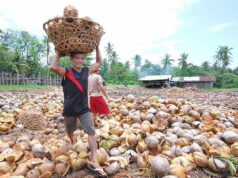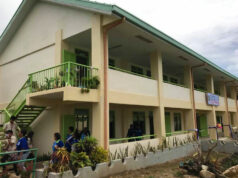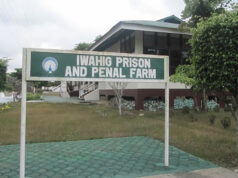By Victor V. Saulon, Sub-Editor
THE Asian Development Bank (ADB) said it plans to scale up its Philippine pilot microgrid project by employing a business model that will not require grant money from the multilateral lender.
“We are trying to look for a business model to make sure that this can happen without always ADB grant money,” said Yongping Zhai, the bank’s energy sector group chief in an interview during the Ayala Finex Finance Summit on Wednesday in Makati City.
“We want to test its feasibility,” he added.
Launched in March 2016, the pilot project on Cobrador Island in Romblon province provides 24-hour electricity to about 244 households through a solar-diesel hybrid power generation system. It was funded by the bank’s grant money.
“We are sharing this information from the pilot. We’re doing detailed assessment on how much it will cost, what the technology will be, how will it meet household demand,” Mr. Zhai said.
The pilot project hopes to demonstrate how clean, renewable energy can be harnessed to upgrade existing rural electricity systems to meet the requirements of remote and energy-deficient communities.
“We want to show this case to the private sector and also through [its] counterpart in NEA (National Electrification Administration) so that they will know that this model can work in such a situation,” Mr. Zhai said.
He said ADB would want to expand the project but it does not have the grant money “for every village.”
“We want to see whether there is a business case — private sector companies can invest or institutions can borrow money to go further. So we are in that phase of we’re trying to go beyond the pilot,” he said.
He said the Cobrador Island project is the first solar-based microgrid project funded by the ADB with battery storage. The bank had previously done a similar project using hydroelectric power, he added.
“We’re also talking other development partners, like Korea,” he said, adding that the country also has funding to support similar projects.
In its website, ADB described Cobrador Island as having pristine beaches that can now attract tourists with its reliable electricity.
“The island’s main source of livelihood — fishing — also stands to benefit from the ability to produce ice to preserve the day’s catch. Romblon is famed as a source of marble, and local craftsmen will now be able to use electrical tools for their work. Delivery of social services like health and education should be smoother with more reliable energy, while homemakers will be able to use household appliances to make chores easier,” it said.
The island’s microgrid system has a 30-kilowatt (kWh) solar photovoltaic capacity to generate energy for use during the day, and 180-kWh lithium-ion batteries to store excess energy for later use. When the solar power is used up, it is combined with a 15-kWh diesel generator and a control system to allow switching to diesel.
“By using solar instead of diesel to meet the 24-hour energy needs, the system will reduce carbon dioxide emissions by 64.8 tons per year, while saving around 24,000 liters of diesel fuel,” the bank said.
Mr. Zhai said the battery storage capacity for now cannot be too big because it remains expensive. He said the bank has ceased government-to-government lending in the energy sector since its privatization.
“So it’s up to the private companies to develop and invest. If they borrow money from ADB private sector department, then we’ll consider,” he said.



